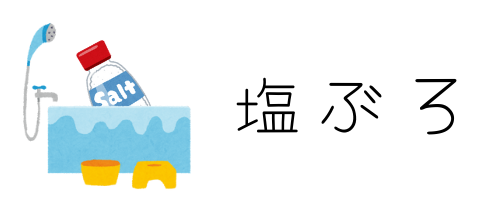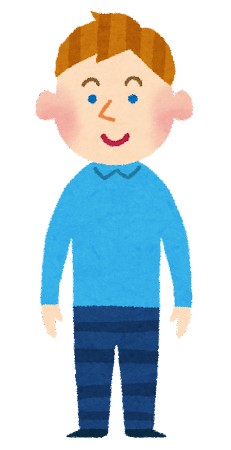ライフハックとしてではなく、英語学習にも極めて有用なのが、著名人が10分程度のプレゼンを行うTEDです。
TED Talksとは、あらゆる分野のエキスパートたちによるプレゼンテーションを無料で視聴できる動画配信サービスのことです。10年ほど前にサービスが開始されてから、政治、心理学、経済、日常生活などの幅広いコンテンツが視聴できることから人気を集めています。
RareJob English Lab
TEDは4000を超える膨大な数の動画があります。しかし慣れないうちは、動画の探し方や視聴のコツが分かりませんよね。この記事では、数多くのTEDを見てきた管理人(塩@saltandshio)が、心を揺さぶられたトークをあらすじと一緒にご紹介します。
ビジネス英会話を効率よく身につけたい方におすすめスクール
シェーン英会話
シェーンは1977年の創業以来、ネイティブ講師が英語を英語で教える「直接教授法」を採用しています。首都圏におけるスクール拠点数は、ネイティブ講師の英会話スクールでNo.1。駅から近いスクールが多いので通いやすく時間を有効に使えます。
スピークバディ パーソナルコーチング
1日1時間の短期集中トレーニングで、あなたの英語力向上をコーチが全力でサポートします。あなたの英語の世界が、劇的に変わります。
トリスタン・ハリス:注意散漫を防ぐより良い技術
ハイテクによって、本来やろうとしていることが中断されてしまうことは非常に多くあります。私たちは、メールやSNSによって時間が盗み取られているような気になることがしばしばあります。ハリスは、「もっとも深みのある人間的な価値を目指して設計を続けると、どのような未来が見えてくるでしょうか?」と問いかけます。(約15分)。
[PR]無料体験レッスン実施中!全国208校、創業40年の老舗英会話スクール【シェーン英会話】SNSとスロットマシーンには中毒性がある
スマートフォンやパソコンの「メッセージが届きました」というポップアップ機能によって、気が散ったり集中力が途切れたことがありませんか。もしくは、意味もなくSNSの更新ボタンを押してしまい、気が付いたらたくさん時間が過ぎていた……なんてことはありませんか。
なぜ、私たちは気付けば多くの時間をハイテクなモノに取られているのでしょう。じつは、ついスマートフォンに手が伸びるのと、スロットマシーンで遊ぶのがやめらないのは、同じ理由から離れることが出来ないのです。
じつは、スロットマシーンはアメリカの娯楽産業のなかで、一番の収益をあげています。なぜ、ワンコインで遊ぶスロットマシーンが多額の利益を生んでいるのか、それは「なにが出るかな?」という期待値が高いからです。
電話(スマートフォン)をチェックする度に、私はスロットマシーンで見るのは、何が出るかな?何が出るかな?
メールをチェックする度に、私はスロットを回して「何が出るかな?」と唱えます。
Every time I check my phone, I’m playing the slot machine to see, what am I going to get? What am I going to get?
Every time I check my email, I’m playing the slot machine, saying, “What am I going to get?”
この期待値によって、スマートフォンが手放せなくなってしまっているのです。
[PR]まずは無料カウンセリング”続けるため”の オンライン英語コーチ「スピークバディ パーソナルコーチング」悪い習慣から抜けだそう
「メッセージが届きました」というポップアップ機能によって、それまでの作業が止まって集中力が途切れた場合、どれほどの時間を失うかご存知ですか?
二人の人物がパソコンで作業を行っていると仮定して、一人がメッセージを相手に送ったとしましょう。送られたメッセージはポップアップ機能によって表示されて、送られた側は作業の手が止まってしまいます。これは、よくある事例ですね。
これには大きな負担がかかります。お互い作業に割って入る度、注意力の回復に平均23分かかるからです。
And there’s serious cost to this, because every time we interrupt each other, it takes us about 23 minutes, on average, to refocus our attention.
これは、グロリア・マーク教授がマイクロソフトリサーチとの共同研究で示した結果です。このように、外部から中断を受ければ受けるほど、私たちは自分で集中を切らすように条件づけられてしまうのです。これはもはや、集中力を切らすための訓練をしているといってもいいでしょう。
[PR]しちだの魔法ペンなら35日でバイリンガルに!楽天4部門1位の英会話!<七田式>「Good Times」だけを抽出する社会へ
だいぶ前から、会社のチャット機能やメール機能には、相手がオンラインかオフラインか分かるだけでなく、「取り込み中」「会議中」という表示がされるようになりました。
同じように、相手の邪魔をせずに都合が良くなったらメッセージを受信するというシステムを、トリスタン・ハリスは開発しました。この機能を使えば、相手の作業を邪魔することを防げるようになったのです。
私たちは、3分半ごとに一度の割合で集中力が切れるといわれています。メッセージのポップアップ機能で、さらに頻繁に集中力が途切れてしまったら作業になりません。ですが、自分の状態を示したり、アプリによってワンクッションを置くことで、自分の作業だけに集中することが出来るようになります。
そこで、目標をアップグレードします
So we upgraded the goal.
トリスタン・ハリスは、あるサイトを紹介します。 『カウチサーフィン』というサイトは、いわば民泊のようなシステムで、一晩泊まれる無料のソファーを探す人と、そんな場所を提供したいと思う人とをマッチさせるウェブサイトです。
『カウチサーフィン』が面白いのは、面識のなかった両者がどれだけ有意義な時間を過ごせたかを推定するシステムを導入していることです。なぜなら、『カウチサーフィン』は、初対面の人同士の経験と関係を継続的で、ポジティブなものにしようという目標を掲げているサイトだからです。
こうした理念によって、『カウチサーフィン』ではインターネットの接続時間を除いた、両者が過ごした有意義な時間を「Good Times」として時間を算出しています。この「Good Times」を仕事や生活で取り入れようというのが、トリスタン・ハリスの考えです。
[PR]知って得する、知らないと損をする!すぐに役立つ相手に合った「伝え方」のコツ!まずは世界に意思表示をしよう
この「Good Times」のなにが素晴らしいのでしょうか。
これがどれだけやる気を起こさせるか、想像できますか? 毎日職場へ行くと、成功の度合いとして利用者が過ごした有意義な時間に対しての貢献を示す新しい数値が得られ、その数値はあなたの毎日の働きがないと存在すらしない数値だというんですから。
Can you imagine how inspiring it would be to come to work every day and measure your success in the actual net new contribution of hours in people’s lives that are positive, that would have never existed if you didn’t do what you were about to do at work today?
世界全体が、こんな風に回ったら仕事はどんなに素晴らしいものになるでしょうか。仕事だけではありません。料理のレシピサイトでも、面白くない記事を読んだ時間と、画面をスクロールして過ぎた時間を差し引いた数値を示せば、より充実したデータが浮かび上がることでしょう。
ここで、大事なのは利用者の主観を元にデータが計上されることです。人が有意義な時間を過ごすのをサポートする形で、インターネットや仕事がまわっていくのです。そんな世界になるように、世界に意思表示をしようとトリスタン・ハリスは言います。
なぜなら、某ファストフード店のメニューにサラダが載ったのは消費者の要望が届いたからであって、誰も言葉を発しなければ物事は進展しないからというのがその理由です。
[PR]検定試験合格者累計140万人!スマホ対応☆国家資格ほか資格取得ならSMART合格対策講座まとめ:時間を上手に使える世界へシフトしよう
デザイナーは本当に良いデザインを考えて再定義することを、企業は人類の生活への貢献の正味の数値を測ることを、そして私たちはこの新しいテクノロジーが欲しいと意思表示しようと、トリスタン・ハリスは提言します。
そして意思表示をすることで、もっぱら費やした時間に基づいて、方向付けられ運用される世界から上手く過ごした時間数が方向付ける世界へと、シフトすることになります。
私はこのような世界での生活がしたい、このような対話を実現させたいです。
And doing that would amount to shifting from a world that’s driven and run entirely on time spent, to world that’s driven by time well spent.
I want to live in this world, and I want this conversation to happen.
私たちの『つい』無駄に使ってしまっている時間が、有意義な時間へと変わっていく世界。それはきっと、とてもすばらしい世界になることでしょう。
英語全文
What does it mean to spend our time well? I spend a lot of my time thinking about how to spend my time. Probably too much — I probably obsess over it. My friends think I do. But I feel like I kind of have to, because these days, it feels like little bits of my time kind of slip away from me, and when that happens, it feels like parts of my life are slipping away.
<全文を読む>▼クリック▼
But the worst part is that I know this is what’s going to happen, and even knowing that’s what’s going to happen doesn’t stop me from doing it again the next time. Or I find myself in a situation like this, where I check my email and I pull down to refresh, But the thing is that 60 seconds later, I’ll pull down to refresh again. Why am I doing this? This doesn’t make any sense.
But I’ll give you a hint why this is happening. What do you think makes more money in the United States than movies, game parks and baseball combined? Slot machines. How can slot machines make all this money when we play with such small amounts of money? We play with coins. How is this possible? Well, the thing is … my phone is a slot machine. Every time I check my phone, I’m playing the slot machine to see, what am I going to get? What am I going to get? Every time I check my email, I’m playing the slot machine, saying, “What am I going to get?” Every time I scroll a news feed, I’m playing the slot machine to see, what am I going to get next? And the thing is that, again, knowing exactly how this works — and I’m a designer, I know exactly how the psychology of this works, I know exactly what’s going on — but it doesn’t leave me with any choice, I still just get sucked into it.
So what are we going to do? Because it leaves us with this all-or-nothing relationship with technology, right? You’re either on, and you’re connected and distracted all the time, or you’re off, but then you’re wondering, am I missing something important? In other words, you’re either distracted or you have fear of missing out. Right?
So we need to restore choice. We want to have a relationship with technology that gives us back choice about how we spend time with it, and we’re going to need help from designers, because knowing this stuff doesn’t help. We’re going to need design help. So what would that look like?
So let’s take an example that we all face: chat — text messaging. So let’s say there’s two people. Nancy’s on the left and she’s working on a document, and John’s on the right. And John suddenly remembers, “I need to ask Nancy for that document before I forget.” So when he sends her that message, it blows away her attention.
That’s what we’re doing all the time, bulldozing each other’s attention, left and right. And there’s serious cost to this, because every time we interrupt each other, it takes us about 23 minutes, on average, to refocus our attention. We actually cycle through two different projects before we come back to the original thing we were doing. This is Gloria Mark’s research combined with Microsoft research, that showed this. And her research also shows that it actually trains bad habits. The more interruptions we get externally, it’s conditioning and training us to interrupt ourselves. We actually self-interrupt every three-and-a-half minutes.
This is crazy. So how do we fix this? Because Nancy and John are in this all-or-nothing relationship. Nancy might want to disconnect, but then she’d be worried: What if I’m missing something important?
Design can fix this problem. Let’s say you have Nancy again on the left, John on the right. And John remembers, “I need to send Nancy that document.” Except this time, Nancy can mark that she’s focused. Let’s say she drags a slider and says, “I want to be focused for 30 minutes,” so — bam — she’s focused. Now when John wants to message her, he can get the thought off of his mind — because he has a need, he has this thought, and he needs to dump it out before he forgets. Except this time, it holds the messages so that Nancy can still focus, but John can get the thought off of his mind.
But this only works if one last thing is true, which is that Nancy needs to know that if something is truly important, John can still interrupt. But instead of having constant accidental or mindless interruptions, we’re now only creating conscious interruptions,
So we’re doing two things here. We’re creating a new choice for both Nancy and John, But there’s a second, subtle thing we’re doing here, too. And it’s that we’re changing the question we’re answering. Instead of the goal of chat being: “Let’s design it so it’s easy to send a message” — that’s the goal of chat, it should be really easy to send a message to someone — we change the goal to something deeper and a human value, which is: “Let’s create the highest possible quality communication in a relationship between two people. So we upgraded the goal.
Now, do designers actually care about this? Do we want to have conversations about what these deeper human goals are? Well, I’ll tell you one story. A little over a year ago, I got to help organize a meeting between some of technology’s leading designers and Thich Nhat Hanh. Thich Nhat Hanh is an international spokesperson for mindfulness meditation. And it was the most amazing meeting. You have to imagine — picture a room — on one side of the room, you have a bunch of tech geeks; on the other side of the room, you have a bunch of long brown robes, shaved heads, Buddhist monks. And the questions were about the deepest human values, like what does the future of technology look like when you’re designing for the deepest questions and the deepest human values? And our conversation centered on listening more deeply to what those values might be. He joked in our conversation that what if, instead of a spell check, you had a compassion check, meaning, you might highlight a word that might be accidentally abrasive — perceived as abrasive by someone else.
So does this kind of conversation happen in the real world, not just in these design meetings? Well, the answer is yes, and one of my favorites is Couchsurfing. If you didn’t know, Couchsurfing is a website that matches people who are looking for a place to stay with a free couch, from someone who’s trying to offer it.
So, great service — what would their design goal be? What are you designing for if you work at Couchsurfing? Well, you would think it’s to match guests with hosts. Right? That’s a pretty good goal. But that would kind of be like our goal with messaging before, where we’re just trying to deliver a message.
So what’s the deeper, human goal? Well, they set their goal as the need to create lasting, positive experiences and relationships between people who’ve never met before. And the most amazing thing about this was in 2007, they introduced a way to measure this, which is incredible. I’ll tell you how it works. For every design goal you have, you have to have a corresponding measurement to know how you’re doing — a way of measuring success. So what they do is, let’s say you take two people who meet up, and they take the number of days those two people spent together, and then they estimate how many hours were in those days — how many hours did those two people spend together? And then after they spend that time together, they ask both of them: How positive was your experience? Did you have a good experience with this person that you met? And they subtract from those positive hours the amount of time people spent on the website, because that’s a cost to people’s lives. Why should we value that as success? And what you were left with is something they refer to as “net orchestrated conviviality,” or, really, just a net “Good Times” created. The net hours that would have never existed, had Couchsurfing not existed.
Can you imagine how inspiring it would be to come to work every day and measure your success in the actual net new contribution of hours in people’s lives that are positive, that would have never existed if you didn’t do what you were about to do at work today? Can you imagine a whole world that worked this way?
Can you imagine a social network that — let’s say you care about cooking, and it measured its success in terms of cooking nights organized and the cooking articles that you were glad you read, and subtracted from that the articles you weren’t glad you read or the time you spent scrolling that you didn’t like? Imagine a professional social network that, instead of measuring its success in terms of connections created or messages sent, instead measured its success in terms of the job offers that people got that they were excited to get. And subtracted the amount of time people spent on the website. Or imagine dating services, like maybe Tinder or something, where instead of measuring the number of swipes left and right people did, which is how they measure success today, instead measured the deep, romantic, fulfilling connections people created. Whatever that was for them, by the way.
But can you imagine a whole world that worked this way, that was helping you spend your time well? Now to do this you also need a new system, because you’re probably thinking, today’s Internet economy — today’s economy in general — is measured in time spent. The more users you have, the more usage you have, the more time people spend, that’s how we measure success.
But we’ve solved this problem before. We solved it with organic, when we said we need to value things a different way. We said this is a different kind of food. So we can’t compare it just based on price; this is a different category of food. We solved it with Leed Certification, where we said this is a different kind of building that stood for different values of environmental sustainability.
What if we had something like that for technology? What if we had something whose entire purpose and goal was to help create net new positive contributions to human life? And what if we could value it a different way, so it would actually work? Imagine you gave this different premium shelf space on app stores. Imagine you had web browsers that helped route you to these kinds of design products. Can you imagine how exciting it would be to live and create that world?
We can create this world today. Company leaders, all you have to do — only you can prioritize a new metric, which is your metric for net positive contribution to human life. And have an honest conversation about that. Maybe you’re not doing so well to start with, but let’s start that conversation.
Designers, you can redefine success; you can redefine design. Arguably, you have more power than many people in your organization to create the choices that all of us live by. Maybe like in medicine, where we have a Hippocratic oath to recognize the responsibility and this higher value that we have to treat patients. What if designers had something like that, in terms of this new kind of design?
And users, for all of us — we can demand technology that works this way. Now it may seem hard, but McDonald’s didn’t have salads until the consumer demand was there. Walmart didn’t have organic food until the consumer demand was there. We have to demand this new kind of technology. And we can do that. And doing that would amount to shifting from a world that’s driven and run entirely on time spent, to world that’s driven by time well spent.
I want to live in this world, and I want this conversation to happen. Let’s start that conversation now.
Thank you.
<閉じる>
\ ほかにも気になるトークが満載! /








